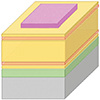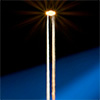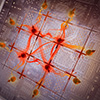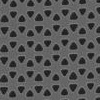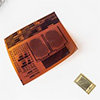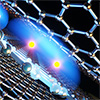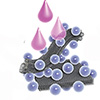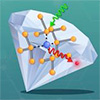Yellowstone Caldera
The Yellowstone Caldera, sometimes referred to as the Yellowstone Supervolcano, is a volcanic caldera and supervolcano in Yellowstone National Park in the Western United States. The caldera and most of the park are located in the northwest corner of Wyoming. The caldera measures 43 by 28 miles (70 by 45 kilometers), and postcaldera lavas spill out a significant distance beyond the caldera proper.
The caldera formed during the last of three supereruptions over the past 2.1 million years: the Huckleberry Ridge eruption 2.1 million years ago (which created the Island Park Caldera and the Huckleberry Ridge Tuff), the Mesa Falls eruption 1.3 million years ago (which created the Henry's Fork Caldera and the Mesa Falls Tuff), and the Lava Creek eruption approximately 640,000 years ago (which created the Yellowstone Caldera and the Lava Creek Tuff).
Check out these latest Nanowerk News:

